Persimmons have a distinctive orange color and can look like apples or tomatoes. Some varieties of persimmons have a flattened oval shape, while others have an acorn shape that resembles apples. The skin of all persimmons is edible and orange in color.
Persimmons are classified into two groups based on their astringency: astringent and non-astringent. Astringent persimmons like the Hachiya should only be eaten when completely ripe, as they can cause dryness and puckering of the mouth if eaten unripe. To ripen astringent persimmons, they should be left for several days in a “puckering” process until they become extremely soft. Non-astringent persimmons, such as the Fuyu and Jiro cultivars, are juicy and sweet and can be eaten right off the tree without waiting for them to ripen.
Types of Persimmons (With Pictures and Names)
Having knowledge about the various kinds of persimmons and how to select the best, ripe, and juicy one can assist in making the right decision. Persimmons are sweet and soft when fully matured. Interestingly, there are over 400 different varieties of persimmons to choose from. Two unique kinds of persimmons are the chocolate persimmon and cinnamon persimmon. Let’s explore the different types of persimmons in more detail.
Japanese (Oriental) Persimmon

Japan has a variety of persimmon known as Diospyros kaki. Fuyu and Sharon fruit are two examples of Diospyros kaki cultivars that are non-astringent. Oriental persimmons that are non-astringent have a flattened spherical shape and a thin skin that covers them. Some people compare these fruits to orange tomatoes.
The orange, fibrous flesh of Japanese persimmons is bitter and astringent due to their high tannin content before they mature. As the fruit progresses, tannin levels decrease, and the flavor becomes milder and less bitter, with no astringency. To avoid the unpleasant taste in your mouth, allow Japanese persimmons to ripen for a few days. Once the flesh softens, you can enjoy the rich, juicy flavor similar to honey.
Fuyu Persimmon

Fuyu persimmons are a sweet and popular cultivar of Japanese persimmon known for their lack of astringency. Their Japanese name, Amagaki, translates to “sweet persimmon.” These persimmons have a squat, tomato-like shape and a vibrant orange color.
Unlike astringent persimmons, Fuyu persimmons can be eaten while still firm and will not cause puckering. They have an oblate, almost 4-sided shape and can grow up to 2.75 inches (7 cm) in diameter. Fuyu persimmons have a sweet, firm flesh that gradually becomes softer and almost gelatinous as they ripen.
They are seldom seedless, and some people describe their flavor as resembling dates with the intensity of apricots. Fuyu dwarf persimmon trees can be purchased if you live in a warm region with frost-free winters, and they produce a profusion of sweet fruits in the fall.
Giant Fuyu Persimmon
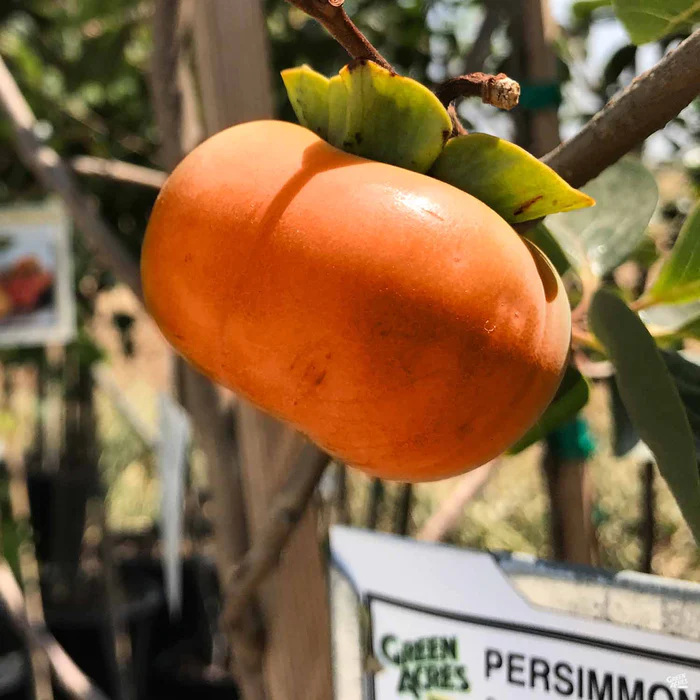
The Giant Fuyu persimmon, also known as Gosho persimmon, is often referred to as the “fruit of the gods” for its incredible taste. This variety of Japanese persimmon has a thick orange skin that turns redder as it ripens, and it is one of the darkest persimmon varieties available.
Its tannin-free, firm flesh is exceptionally sweet and flavorful, with some describing it as tasting like sweet apricots or dates with sugar cane. The Giant Fuyu persimmon is much larger than regular Fuyu fruits, which are about half its size.
Jiro Persimmon

The Jiro persimmon (Diospyros kaki ‘Jiro’) is a type of Japanese persimmon that is non-astringent and sweet, making it suitable for immediate consumption. The fruit has a similar shape to Fuyu persimmons, with a tomato-like appearance and light green leaves on the top.
Unlike other astringent persimmons, the Jiro persimmon can be eaten when it is still firm, earning it the nickname “Apple persimmon.” Its firm flesh is sweet and does not cause the puckering sensation associated with astringent persimmons. While it is a delightful snack on its own, it can also be paired with savory foods to create delicious snacks.
Imoto Persimmon
Imoto persimmons, a Japanese cultivar, are a type of non-astringent persimmon that is also sweet in taste. They have a similar shape to Fuyu and Jiro persimmons, being squat in shape. When ripe, their skin changes from an orange color to a deeper reddish-brown hue. However, even when the flesh is still firm, they are as delicious as Fuyu and Jiro persimmons.
Izu Persimmon
The Izu persimmon is a small, orange fruit that bears a resemblance to a tomato or pumpkin. Like other non-astringent Asian persimmon cultivars, it has a delightful sweetness to it. When the flesh is still firm, it is sweet to the taste, similar to Fuyu and Jiro persimmons. The skin of the Izu persimmon turns a deep orange color while the edible flesh turns a pale orange color.
Hachiya Persimmon
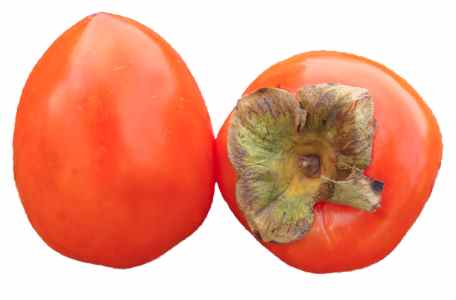
The Hachiya Persimmon is an oblong-shaped astringent persimmon that should only be eaten when it is fully ripe. It is a large fruit compared to Fuyu or Jiro persimmons. While the flesh is high in tannic acid, it becomes delicate, gelatinous, and juicy with no bitterness once it is ripe.
To enjoy this variety of persimmon, it is best to leave them to ripen for a few days after purchasing them from the store. As they ripen, the tannin levels decrease while the sugar content increases, resulting in a heavenly sweetness. Storing persimmons in a paper bag with bananas can speed up the ripening process. To test if it is ready to eat, gently pull the green top of the Hachiya, which should come off easily when it is sweet enough.
Hyakume Persimmon (Cinnamon Persimmon)

The Hyakume persimmon is a non-astringent variety of persimmon that has an oblong shape and a bright orange color. It is also known as the Cinnamon persimmon due to the brown speckles on its flesh. Despite being firm, the flesh of the Hyakume persimmon is very sweet, but the sweetness becomes even more intense as the fruit ripens. The flavor of the fruit is often compared to brown sugar, and the ripe flesh takes on a light cinnamon color.
The seeded variety of Hyakume persimmon is considered the sweetest, while the seedless variety can have a more intense and bitter taste. Some say that the Cinnamon persimmon has a flavor that is a mix of Fuyu and Hachiya persimmons. It has the oblong shape of Hachiya and the delicious taste of Fuyu kaki fruits.
Sharon Fruit (Triumph Persimmon)

The Sharon fruit, also called the Triumph persimmon, is a well-liked non-astringent persimmon known for its sweetness. In some countries, it is referred to as “hurma.” The Sharon fruit is oval-shaped and has a short, squat appearance, similar to that of a large tomato. The edible skin of these persimmons is crispy and has an apple-like appearance.
The fruit is seedless and coreless, so you can eat it in its entirety apart from the stem and leaves on top. The Sharon fruit grows on the Sharon Plains in Israel, where it gets its name from.
Other Types of Non-Astringent Japanese Persimmons
Sweet persimmon fruits come in a wide range of colors and sizes. When you bite into one of these sweet Asian persimmons, it won’t pucker:
Yeddo-ich Persimmons
The seedless sweet persimmon has dark brown sweet flesh and is typically seeded.
Hanafuyu Persimmons
If they are hard or soft, persimmons are oblong in shape and have a sweet flavor.
Suruga Hanafuyu
With no traces of astringent tannins, persimmon is a high-quality sort of sweet fruit.
Shotgatsu Hanafuyu
A mildly sweet persimmon with flattened, doughnut-shaped leaves.
American Persimmon
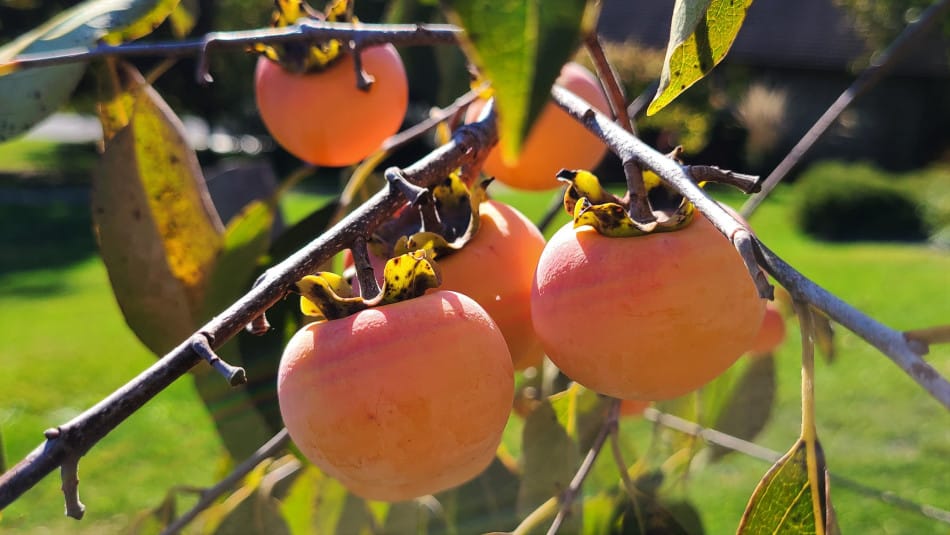
The American persimmon (Diospyros virginiana) is a type of astringent persimmon that can be found in the Southern United States. It goes by other names such as sugar plums and possum apples. It is also sometimes referred to as the “date-plum” but it should not be confused with sweet Oriental persimmon varieties.
The fruit of the Diospyros virginiana tree is orange-yellow and can grow up to 2.5 inches (6 cm) in diameter. As with all astringent persimmons, the fruit must ripen completely before it is edible. However, if left to ripen for too long, it will become mushy and difficult to eat. The American persimmon has an oblong shape that resembles an orange apple and is known for its astringency.
Maru (Chocolate Persimmon)
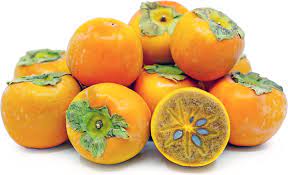
Maru persimmons, also known as Chocolate persimmons, are a unique variety of persimmon that have an orange skin and are astringent when unripe. These persimmons are smaller and oblong, similar to Hachiya persimmons, but the flesh inside is rich brown and sweet when fully ripe.
Despite being very sweet, Maru persimmons are not overly so, and some people describe the flavor as having nutmeg undertones. It’s important not to assume that the dark brown flesh is spoiled or off, as this is simply the natural color of the fruit and it’s actually a delicious treat.
Black Sapote (Chocolate Pudding Fruit)
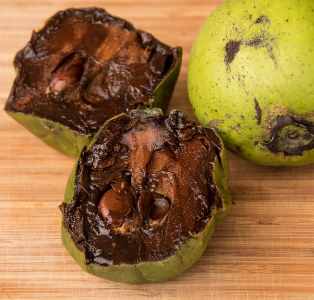
Black sapote, also known as Diospyros nigra, is a type of tomato-shaped persimmon fruit that grows in Mexico, Central America, and South America. It has a rich and creamy chocolate pudding-like texture and flavor when fully ripe. However, the fruits are astringent and inedible when unripe, and measure around 5-10 cm in diameter.
The black sapote fruit has an olive green skin color when fresh, but it turns yellow-green when mature, and it is not edible. The unripe pulp is white and contains seeds. However, when the fruit is fully mature, the pulp turns a chocolate brown color. Black soapapple, zapote prieto (in Spanish), and chocolate pudding fruit are some of the names for the black sapote persimmon. When ripe, the color, viscosity, and taste of the fruit resemble chocolate pudding.
Texas Persimmon
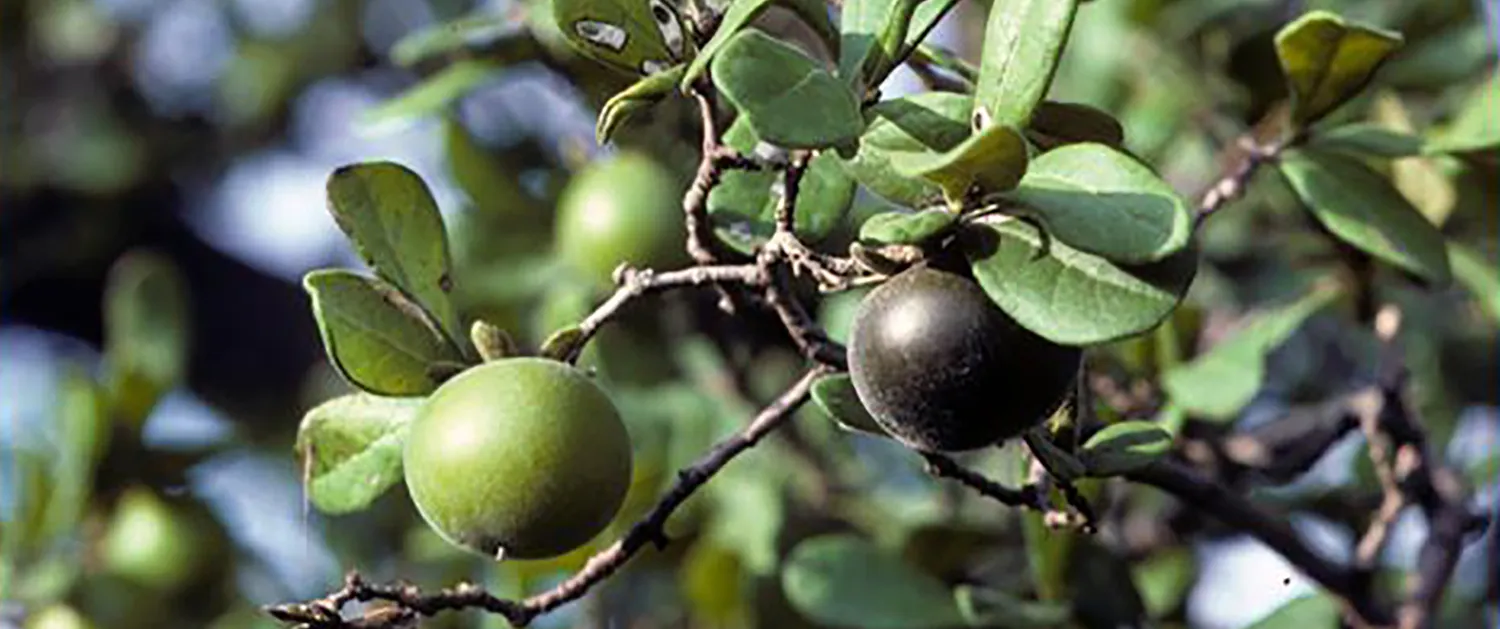
The Texas persimmon (Diospyros texana) is a unique type of persimmon that produces small black fruits when fully ripe. These fruits are about 1.5-2.5 cm in diameter and have a sweet flavor that is distinct from other persimmon varieties.
The Texas persimmon is also known by other names such as Mexican persimmon and chapote manzano. Although mildly astringent when fully mature, the black fruits can be eaten straight off the tree when the green fruit turns deep purple or black. However, unlike other sweet persimmons, the Texas persimmon has numerous seeds within its small fruits.
Velvet Apple Persimmon
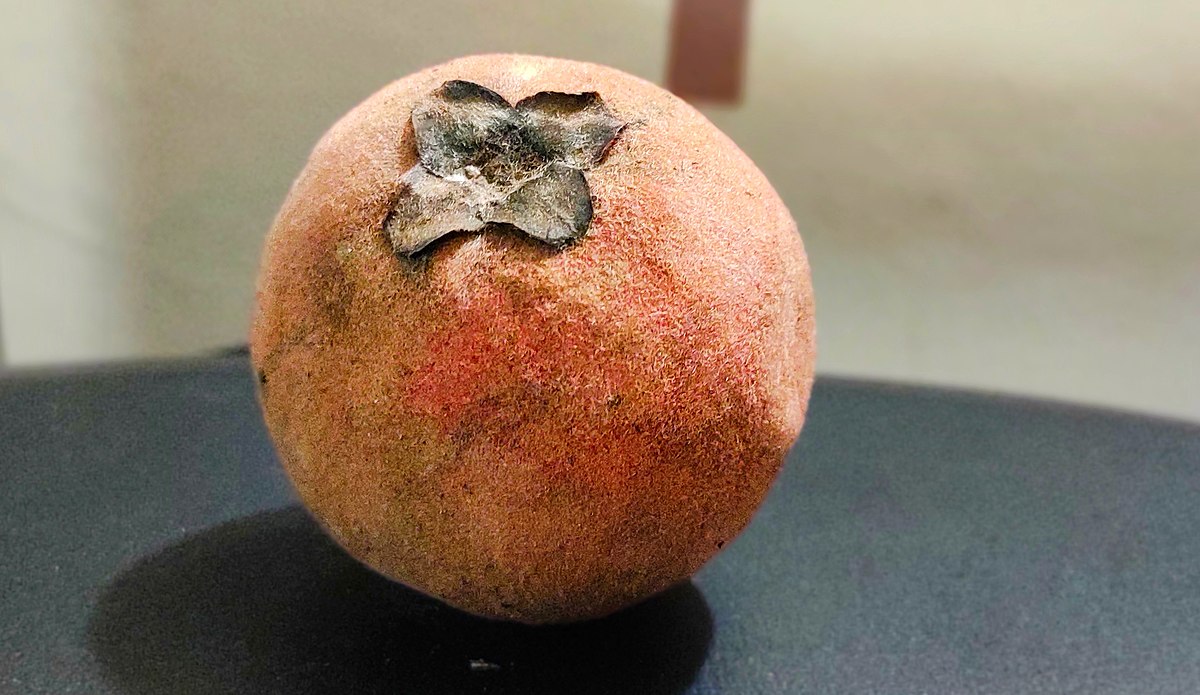
Velvet Apple persimmons, also known as Velvet persimmons, are an unusual tropical fruit with an inedible, hairy skin and large seeds. They are native to Asia and are not well known outside of that region. These persimmons have a velvety skin that comes in various colors, which sets them apart from other Asian persimmons. However, the fruit is quite astringent until it ripens completely.
The fruit’s white flesh is full of numerous seeds, and each fruit provides very little edible flesh. Velvet persimmons are one of the few types of persimmons that have inedible skin. The hairy coat emits a strong cheese-like smell that can cause discomfort if eaten. Before consuming the sweet flesh, the skin and seeds must be removed to prevent bitterness.
Date-Plum Persimmon (Caucasian Persimmon)
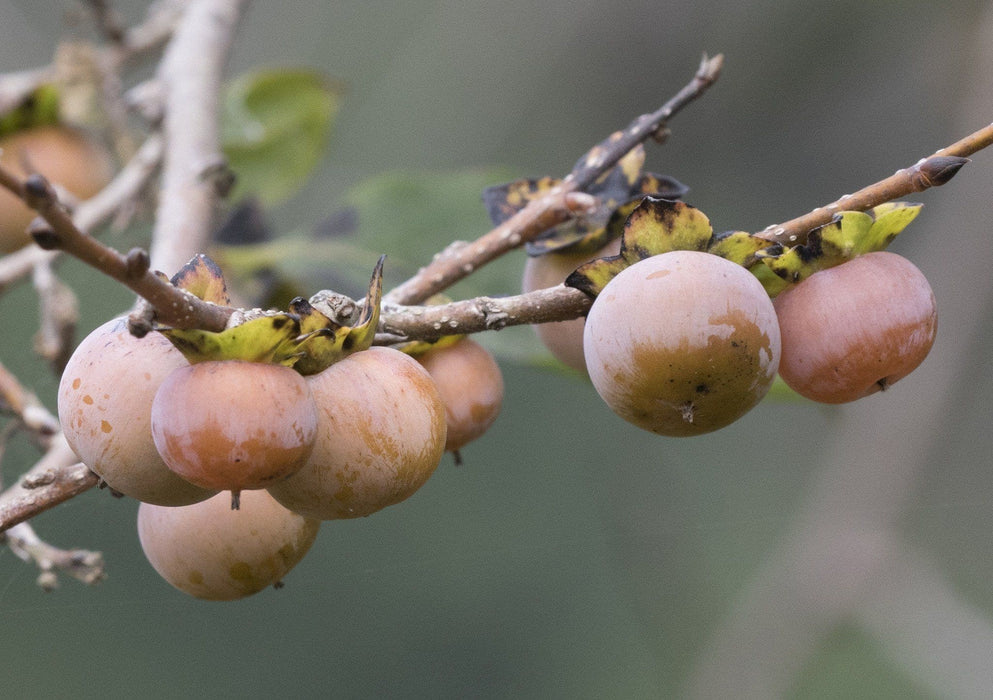
The Date-Plum persimmon (Diospyros lotus) is one of the smallest persimmon types available. Its tiny orange fruits, which grow on the Diospyros lotus tree, only measure 0.4″ to 0.8″ (1 to 2 cm) in diameter. This persimmon species, also known as the Caucasian persimmon or lilac persimmon, is native to East Asia but is now found in many parts of the world, including the Mediterranean and the United States.
If you try to eat it before it is ripe, the Date-Plum persimmon is an astringent fruit that will leave your mouth dry. However, when they become soft and fully mature, these small persimmon fruits have a rich sweet flavor that is similar to dates and plums. You can tell if they are ripe when the cherry-sized fruits turn a dark purple plum color.
